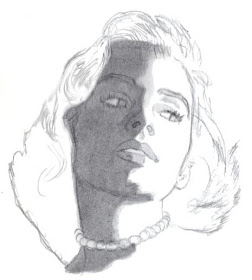John Henry Hill (1839-1922) painted this oil study near Nyack, New York during July of 1863. It occupied him “nearly every afternoon in the month while our civil war was going on.”
Painting an extended field study like this means working in light conditions that change drastically by the hour. This is especially true in a woodland setting, where the light and shadow projected down through the trees sweeps rapidly across the scene.
The detail shows a section of the work about six inches square. Such extensive studies were common among the so-called "American Pre-Raphaelites." These painters followed the landscape theorist John Ruskin, who advocated: “Go to Nature in all singleness of heart, and walk with her laboriously and trustingly, having no other thought but how best to penetrate her meaning, rejecting nothing, selecting nothing, and scorning nothing."
-------
More about John Henry Hill
Book: The New Path: Ruskin and the American Pre-Raphaelites
Book: The New Path: Ruskin and the American Pre-Raphaelites
Thanks to the Metropolitan Museum in New York, which offers a high resolution file of the painting on its website, and has the painting on view in its new American wing.







































